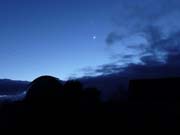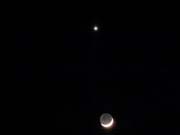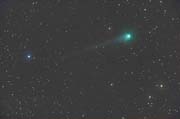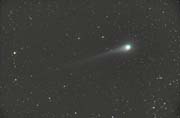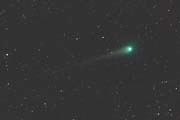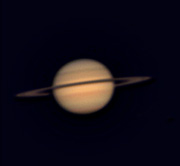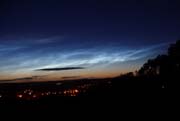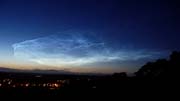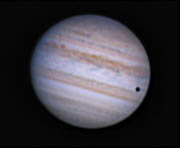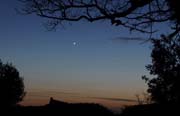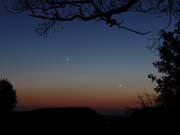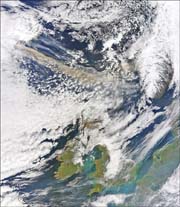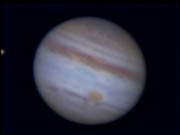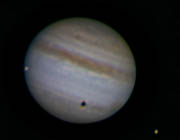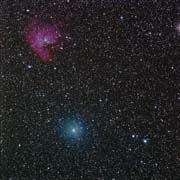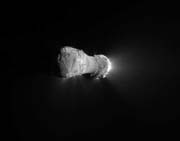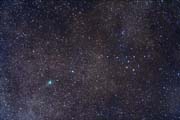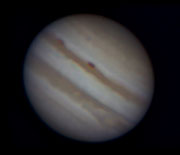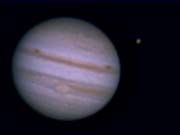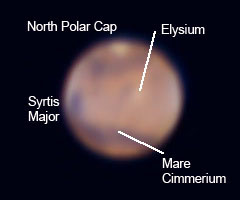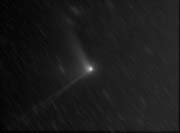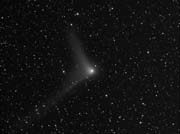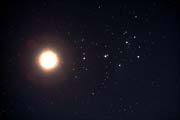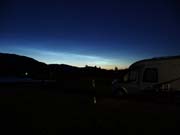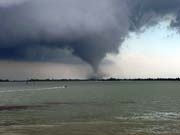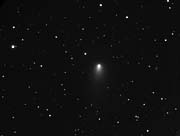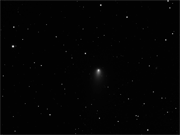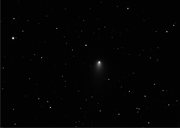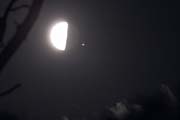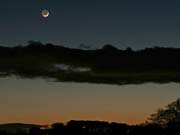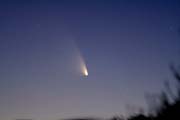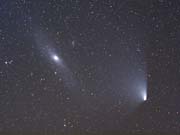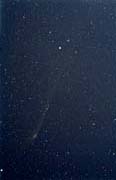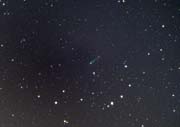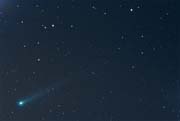|
During a prolonged period of wet and cloudy weather a
clear window of a few hours on October 1st gave me an
opportunity to image comet 103P Hartley as it passed near
NGC281 - the 'Pacman' nebula. This comet was discovered by
Malcom Hartley in Australia on March 15, 1986 and has an
orbital period of about 6.5 years, so this was its third
known pass. Very high in the sky with the tail pointing
away, so only the coma visible. Estimated at around 7th
magnitude, and was just visible in my 15x50 binoculars.
SBIG ST-4000XCM and Canon 400L telephoto lens (400 mm
focal length) stopped down to approx. 7.1 using an external
mask. 21 sub frames x 3 minutes, stacked using the special
comet feature of Deep Sky Stacker.
Full size
(913KB)
There are also animations of the comet head as it moved
across the sky during the hour or so of the exposures,
cropped from the full size.
AVI (748KB)
DivX Codec. Or for those who don't have the codec,
GIF (3.57
MB) This animation was used in the
November 2010 'Sky at Night' TV programme.
|
